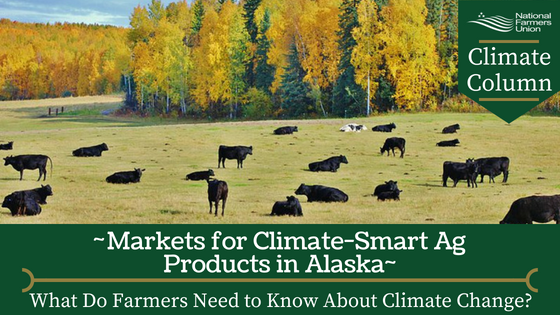 By Tom Driscoll, Director of NFU Foundation and Conservation Policy
By Tom Driscoll, Director of NFU Foundation and Conservation Policy
Climate Column readers know there are many things farmers can do to mitigate the negative impacts of climate change. The Natural Resources Conservation Service (NRCS) within the U.S. Department of Agriculture (USDA) offers farmers technical and financial support to help interested farmers abate climate change and become more climate resilient. In every state throughout the U.S., the State Conservationist considers the advice of bodies like the State Technical Committee to identify key conservation priorities for NRCS programs like the Environmental Quality Incentives Program (EQIP). Many times, the statewide priorities named by the State Conservationist encourage practices that also have climate benefits. For example, setting water quality or soil health as a statewide priority could encourage conservation tillage and precision nutrient applications that store atmospheric carbon in the soil and reduce nitrous oxide emissions while also preventing nutrient runoff into surface water and building healthy soils. When the State Conservationist sets statewide priorities, NRCS support should be more available to producers interested in the practices that achieve the statewide priority.
However, excess consolidation in the food system prevents farmers from reaching vibrant markets with the products of climate-smart farming, or it prevents them from getting a good price for the products. Farmers who want to secure better margins can organize their peers and work with groups like NFU to explore and build new markets for climate-smart farm products, putting NRCS resources toward even greater use. USDA and other organizations offer resources to help family farmers overcome entrenched inertia in today’s markets.
In Alaska, grazing land health has been identified as a statewide priority. Improving grazing land health often means managing grazing more intensively and planting forage more carefully, which can mean working with different herd sizes that may not be well-suited to multinational corporate processing. The state’s geographic remoteness from the lower 48 states lend additional motivation for pursuing NRCS’s goal of improving grazing land health. Shipping meat to Alaska is expensive and can impact consumers’ enjoyment, and the fuel used in transportation is another source of greenhouse gas emissions that Alaska producers could help avoid. In-state news coverage indicates there’s growing interest in local meat.
Geographic circumstances and increasing interest in local food indicate that Alaska might be a good place for livestock processing at scales that are different from most of the meatpacking in the U.S. today. USDA’s Rural Development agency offers the Value Added Producer Grant which Alaska producers could use to assess the viability of building new processing capacity for marketing the livestock that could be bolstered through Alaska NRCS’s focus on improving grazing land health. In 2016, Rural Development issued several awards for such feasibility studies through the VAPG, including a $46,000 grant to an Arizona farm for a feasibility study and business plan for marketing processed pork. Alaskan farmers could use the same program to see whether and how they could market meat produced on improved grazing lands.
Would your farm and community benefit from better marketing opportunities for meat produced on improving grazing lands? Farmers can come together with farm organizations to see the process of climate-smart agriculture from implementation of beneficial practices all the way through marketing the resulting products. Stay tuned in future week as we discuss state-by-state conservation goals and opportunities.
Like what you’ve read? Check out our Climate Leaders home page, join the conversation in the NFU Climate Leaders Facebook Group, and keep up-to-date with NFU climate action by signing up for the mailing list.

